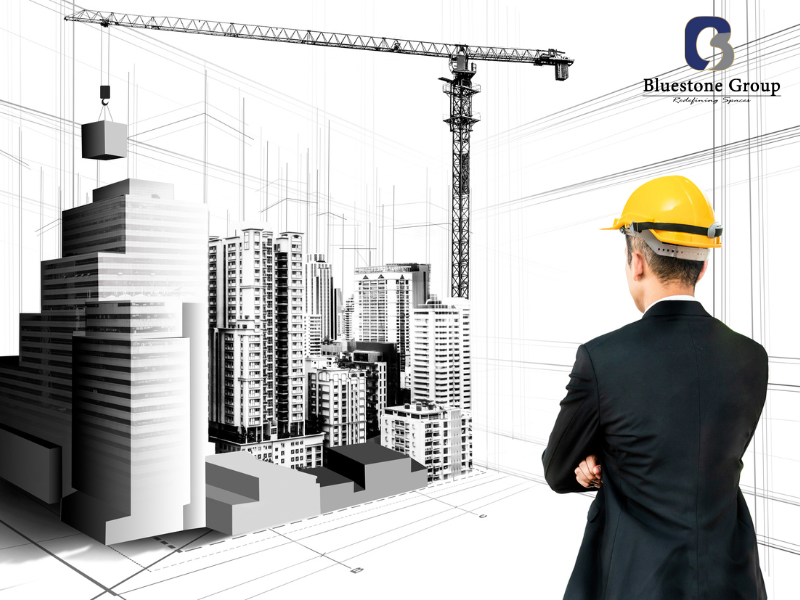
Having a Guide to Real estate development is important as it is one of the complex process that requires careful planning, strategic execution, and collaboration across multiple teams.
Whether you’re working on a residential project, a commercial space, or a mixed-use development, understanding the steps involved in taking a project from concept to completion is crucial for success.
This guide and steps outlines the key stages of real estate development, offering insights into what happens at each phase and why it’s essential to get every step right.
1. Feasibility Study and Market Research

Before any plans are drawn or land is purchased, a feasibility study and market research must be conducted. This stage involves analyzing the project’s potential profitability and understanding the demand for the type of development you’re considering.
The goal is to determine if the project is financially viable and if it meets the needs of the market.
Key components of this phase include:
- Analyzing market demand for residential, commercial, or mixed-use properties.
- Estimating costs vs projected revenues.
- Identifying potential risks and opportunities.
A thorough feasibility study helps developers avoid costly mistakes and ensures that the project aligns with current market trends.
“turnkey” comes from the idea that once the project is completed, the client can simply “turn the key” and start using the space without any additional work.
This approach is ideal for those who want a seamless construction experience, as the contractor takes full responsibility for every stage of the process.
2. Land Acquisition and Zoning Approvals
Once the feasibility study is complete and the project is deemed viable, the next step is to acquire land.
Land acquisition can be a straightforward or complex process, depending on factors such as location, legal issues, and property availability.
After securing the land, developers need to ensure that the project complies with local zoning regulations and building codes.
This may involve seeking zoning approvals or variances from local authorities to ensure that the development can proceed as planned.
Key considerations during this phase include:
- Verifying zoning requirements and land use regulations.
- Completing due diligence on land ownership and environmental assessments.
- Securing any necessary permits or approvals.
3. Design and Planning
With land acquired and zoning approvals in place, it’s time to move on to the design and planning phase. This is where the project’s vision begins to take shape, and architects, engineers, and planners collaborate to create the development’s blueprint.
The design phase includes:
- Developing architectural drawings and site plans.
- Collaborating with engineers on structural and mechanical systems.
- Integrating sustainability practices, such as energy-efficient designs and eco-friendly materials.
The design and planning phase is essential for setting the project’s scope, timeline, and budget. At this stage, developers must ensure that the design aligns with the project’s goals, budget and regulatory requirements.
4. Financing the Project

Securing financing is one of the most critical steps in real estate development. Whether the project is funded through private investors, banks, or other financial institutions, having a solid financing plan is key to moving forward.
There are various ways to finance real estate projects, including:
- Construction loans from banks.
- Equity investments from private investors or partners.
- Government incentives for certain types of development, such as affordable housing or green building initiatives.
At this stage, developers need to create a detailed financial plan that includes cost estimates, revenue projections, and a timeline for when different financing will be needed throughout the project.
5. Construction Phase
Once financing is secured and the designs are finalized, the project moves into the construction phase. This is where the development truly begins to take shape, with contractors breaking ground and construction teams working to bring the project to life.
Key aspects of this phase include:
- Hiring qualified contractors and construction crews.
- Project management to ensure timelines, budgets, and quality standards are met.
- Ongoing inspections to ensure compliance with safety regulations and building codes.
Throughout the construction phase, it’s crucial to maintain clear communication between all stakeholders, including developers, contractors, architects, and investors.
6. Marketing and Pre-Sales
While construction is ongoing, developers should begin their marketing and pre-sales efforts. This phase is crucial for generating interest in the project and securing tenants, buyers, or investors before the development is completed.
Marketing efforts may include:
- Creating marketing materials such as brochures, videos, and digital content.
- Hosting open houses or virtual tours for potential buyers or tenants.
- Working with real estate agents and brokers to market the property.
The goal during this phase is to build momentum and create demand for the project, ensuring that there are committed buyers or tenants ready when the project is completed.
7. Final Inspections and Handover

As construction nears completion, the development must undergo a series of final inspections to ensure that everything meets local building codes and safety regulations.
Once the project passes all inspections, the developer can begin the process of handing over the property to buyers or tenants.
This phase involves:
- Conducting final walkthroughs with contractors and clients.
- Completing any necessary repairs or touch-ups before the handover.
- Coordinating with legal teams to finalize sales contracts or lease agreements.
The successful completion of this phase marks the formal end of the development process, as the property is handed over to its new owners or tenants.
Conclusion
Real estate development is a multifaceted process that requires careful planning, collaboration, and execution. From the initial concept to the final handover, each step plays a vital role in ensuring the success of the project. By following this step-by-step guide, developers can navigate the complexities of real estate development and deliver projects that meet market demand, stay within budget, and are completed on time.